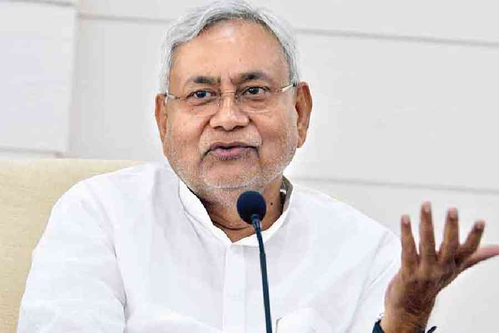Patna: One of the oldest allies of the BJP, Bihar Chief Minister Nitish Kumar, who heads the JD(U), finds himself in the kingmaker’s position, with the saffron camp falling short of a majority in the Lok Sabha.
The septuagenarian had also played a key role in the formation of the INDIA bloc, hosting the first meeting of opposition leaders from across the country. No wonder, he is said to be getting feelers from the opposition alliance.
His relationship with BJP goes back to the mid-1990s when Kumar had collaborated with veteran socialist leader late George Fernandes to float the Samata Party, as a revolt against Lalu Prasad, the then chief minister of Bihar, who had acquired an overbearing presence in the Janata Dal founded by former prime minister V P Singh.
The past collaboration that the socialists had with the Jan Sangh, the BJP’s previous avatar, members of which had stoutly refused to give up their association with RSS, had made the former suspicious of the Hindutva clan.
This was perhaps the reason why the Samata Party, at the outset, had an alliance with the CPI(ML) Liberation despite the socialists seldom being on the same page with the Left.
The alliance failed to click in the assembly polls of 1995 and the Samata Party found that it shared the antipathy towards Lalu Prasad and they struck an alliance that was moderately successful in the Lok Sabha polls of 1996.
The alliance with BJP, which ruled the country from 1998 to 2004, provided much-needed exposure to Kumar who held key portfolios like agriculture, railways and surface transport in the cabinet of late Atal Bihari Vajpayee.
However, it was not until 2005 that the moment of glory came for Kumar, whose party was by now known as JD(U), formed after the merger of the Samata Party with yet another rebel Janata faction headed by late Sharad Yadav.
The JD(U)-BJP combine won the assembly polls, and Kumar became the chief minister, a post held by Prasad and his wife Rabri Devi for 15 years.
The taint of 2002 Gujarat riots had made Kumar apprehensive of Narendra Modi’s rising stock within the BJP and he snapped ties in 2013, ending a 17 years old partnership.
Since then, political expediency has caused the JD(U) supremo to stitch short-lived alliances with Prasad’s RJD on two occasions, only to make abrupt returns to NDA both times.
The flip-flops have enabled Kumar to survive in power, though these have caused the popularity of the longest-serving chief minister of Bihar to decline, as per political analysts of different hues.
The BJP, which is now a force to reckon with in Bihar, has always been glad to welcome Kumar back as an ally, perhaps wary of an OBC consolidation it may have to deal with, were it to take on a JD(U)-RJD combine.
With the JD(U)’s performance being at par with that of the BJP in Bihar, those in the saffron party think he was won back in good time, even as overtures from the opposition camp may remain a cause for consternation.
The BJP-led NDA Tuesday appeared set to retain the upper hand in Bihar, where the saffron party seemed to be performing below expectations but allies put up a better-than-expected show.
The JD(U), headed by Kumar, was leading in 12 seats, as many as the BJP, despite having contested one less than the latter, which fielded candidates in 17 constituencies.

